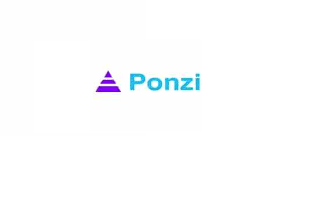PonziCoin (PONZI): The Satirical Decentralized Ponzi Scheme
Table of Contents

PonziCoin is a Mineable Token. Are you curious about expanding your crypto portfolio with other mineable tokens or alternative coins? At Niftyfinances, you’ll find in-depth information, guides, and the latest updates on various promising crypto projects. Whether you’re a miner or an enthusiast looking for unique opportunities, Niftyfinances is your go-to platform to discover what’s next in decentralized finance!
In a world where cryptocurrency projects promise high returns with little transparency, PonziCoin (PONZI) took a different approach—it openly declared itself a Ponzi scheme. Launched as a satirical experiment, PonziCoin mocked the speculative excesses of the crypto boom by branding itself as a “transparent, decentralized Ponzi scheme.” While humorous in intent, the project highlighted the alarming ease with which dubious ventures could attract investors, serving as a cautionary tale for the crypto community.

What Is PonziCoin? A Parody with a Message
The cryptocurrency space has seen its fair share of scams, from rug pulls to Ponzi schemes that lure investors with promises of guaranteed high returns. But what happens when a project openly admits to being a Ponzi scheme? That’s exactly what PonziCoin did.
PonziCoin was a satirical cryptocurrency project that mocked the speculative frenzy in crypto markets. Unlike fraudulent schemes that hide their true nature, PonziCoin fully embraced its Ponzi structure and marketed itself as such. While it may have started as a joke, PonziCoin revealed how easily investors fall for get-rich-quick schemes in the crypto space.
A Self-Aware Ponzi Scheme
Traditional Ponzi schemes operate by using new investor money to pay returns to earlier investors. They usually collapse when new investments slow down, leaving later investors with nothing. PonziCoin, however, took a different approach, it didn’t pretend to be legitimate.
How PonziCoin Worked:
The humor behind PonziCoin was that even after openly admitting it was a Ponzi scheme, people still invested in it. This exposed a harsh truth about the crypto space: many investors prioritize quick profits over fundamental research.
- Investors Bought PonziCoin: Just like any other cryptocurrency, users could buy and hold PonziCoin, hoping for price appreciation.
- New Investors Paid Earlier Investors: The system redistributed funds, ensuring that those who joined early made profits at the expense of later investors.
- No Real Utility or Use Case: Unlike Bitcoin or Ethereum, which serve as a store of value or smart contract platforms, PonziCoin had no fundamental value—it was purely a joke.
- Transparent About Being a Ponzi Scheme: While real Ponzi schemes deceive participants, PonziCoin made its nature clear from the start, exposing the absurdity of the crypto market’s speculative behavior.
Why It Was Created?
PonziCoin wasn’t just a joke, it was a social experiment and a critique of the crypto market’s speculative nature. The project highlighted how investors, driven by greed, often ignore red flags and invest in anything promising high returns.
The Impact of PonziCoin
Although PonziCoin started as a joke, it had a lasting impact on crypto culture. It made people question:
- How many projects in the crypto space operate like hidden Ponzi schemes?
- Why do people continue to fall for obviously unsustainable investment models?
- How can investors become more educated to avoid scams?
PonziCoin’s rise and fall served as a wake-up call to the crypto community. It encouraged healthy skepticism and reminded investors to do their research (DYOR) before investing in any project.
Similar Parody Cryptos That Followed
PonziCoin wasn’t the only self-aware project to poke fun at crypto speculation. Other meme-based or satirical tokens have emerged, such as:
Dogecoin (DOGE): Started as a joke but gained widespread adoption.
ScamCoin: Another parody token that mimicked scam tactics to raise awareness.
PumpCoin: A token designed to highlight the dangers of pump-and-dump schemes.
While some of these projects started as jokes, many gained real communities and value, showing how unpredictable the crypto market can be.
PonziCoin was more than just a meme—it was a brilliant satire of the reckless speculation in crypto markets. By openly calling itself a Ponzi scheme, it exposed the willingness of investors to overlook obvious red flags in pursuit of quick profits.
The biggest takeaway from PonziCoin’s story is simple: If something seems too good to be true in crypto, it probably is. The next time a project promises guaranteed high returns with no risk, remember PonziCoin—and think twice before investing.

How PonziCoin Worked
PonziCoin was a satirical cryptocurrency designed to expose the speculative nature of crypto investing. Unlike traditional Ponzi schemes that deceive participants, PonziCoin openly admitted to being a Ponzi scheme from the beginning. Despite this transparency, investors still poured money into it, proving a key point: people are willing to ignore risk if they believe they can make quick profits.
This guide breaks down how PonziCoin functioned, the mechanics behind its structure, and why people still invested despite knowing the risks.
Blockchain-Based Pyramid Structure
PonziCoin followed a classic pyramid scheme model but operated on the blockchain.
How It Worked:
- New Investors Paid Earlier Participants – Like a traditional Ponzi scheme, new investors’ funds were used to provide returns to earlier participants. This meant the system only worked as long as new people kept joining.
- No Real Revenue Generation – Unlike legitimate investments, which create value through business models, PonziCoin had no actual utility or underlying value.
- Self-Sustaining Until Collapse – The model worked as long as enough new investors entered the system, but once growth slowed, the structure became unsustainable.
The irony of PonziCoin was that it mirrored the mechanics of real Ponzi schemes while being fully transparent about it. Despite this, many people still bought in, expecting to sell at a profit before the collapse.
Why People Still Invested:
Greed and FOMO (Fear of Missing Out) – Many believed they could enter and exit before the system collapsed.
Crypto Speculation Culture – The market was already filled with questionable projects, so PonziCoin did not seem any more risky than other coins.
Viral Hype and Humor – Some participants joined for fun, treating it as a joke rather than an investment.
This structure exposed a harsh reality: even when a Ponzi scheme is obvious, some investors will still participate in hopes of profiting before it fails.
Smart Contract Transparency
Unlike traditional Ponzi schemes, which operate behind closed doors, PonziCoin used smart contracts to automate fund distribution.
PonziCoin’s Smart Contract:
Funds Were Distributed Automatically – When new users invested, the smart contract instantly redistributed those funds to earlier participants.
No Hidden Control – Unlike typical Ponzi schemes that rely on a central operator, PonziCoin’s contract was publicly viewable on the blockchain.
Purely Code-Based – No one could manipulate the contract once deployed, making it one of the most honest Ponzi schemes ever created.
How It Differed from Real Ponzi Schemes:
No Deception – Traditional Ponzi schemes rely on lies and false promises, but PonziCoin was upfront about its nature.
No Central Authority – Most scams involve a single operator controlling the funds, whereas PonziCoin’s smart contract automated everything transparently.
Instant Payouts – Many Ponzi schemes delay payouts to maintain an illusion of sustainability, but PonziCoin’s blockchain-based system paid users immediately.
PonziCoin’s smart contract demonstrated that blockchain technology can expose and automate even the most flawed financial models.
Why PonziCoin Attracted Real Investments
Despite its obvious flaws, PonziCoin attracted real investors. Here’s why:
1. The Crypto Market Was Already Speculative
Many crypto investors were used to buying tokens with no clear use case, hoping for quick price increases. In this environment, PonziCoin did not seem much different from many other coins.
2. People Thought They Could “Outsmart” the System
Many investors knew PONZI was unsustainable but believed they could exit before it collapsed. This is the same mentality that fuels real Ponzi schemes.
3. The Irony Made It Popular
PonziCoin became a viral joke, attracting attention from crypto enthusiasts who wanted to be part of the satire. Some people even invested for entertainment rather than profit.

Sparking Financial Awareness in Crypto
PonziCoin may have started as a joke, but it left a lasting impact on financial awareness in the crypto space. By openly presenting itself as a Ponzi scheme, it exposed how easily speculative investments gain traction, even when their flaws are obvious. Through humor and irony, PONZI became more than just a parody, it served as an educational tool, helping investors recognize the warning signs of unsustainable financial models. The project also sparked important conversations about sustainable investment practices in the rapidly evolving world of cryptocurrency.
How PonziCoin Exposed Speculative Investing
The rise of PONZI highlighted a major issue in crypto: many investors jump into projects without fully understanding them. This tendency is fueled by:
FOMO (Fear of Missing Out): People rush to invest, fearing they will miss an opportunity for quick profits.
Lack of Due Diligence: Investors often rely on hype and social media rather than researching a project’s fundamentals.
Speculation Over Utility: Many crypto traders prioritize short-term gains rather than long-term value.
PonziCoin took advantage of these tendencies but in a fully transparent way. Its success proved that investors often ignore obvious risks if they believe they can profit quickly.
A Fun Yet Educational Tool
Despite its satirical nature, PonziCoin became an unexpected learning tool for investors. By openly admitting to being a Ponzi scheme, it helped crypto enthusiasts understand:
How Ponzi structures work – Many people heard about Ponzi schemes but never fully understood their mechanics. PONZI provided a real-world example in a safe environment.
Why unsustainable models always collapse – Investors could see firsthand how a system that relies solely on new participants will eventually fail.
How transparency doesn’t always deter speculation – Even though PONZI was honest about its nature, people still invested, revealing how powerful greed can be in financial decision-making.
PonziCoin turned a complex financial concept into a hands-on experience, making it easier for people to recognize red flags in future investments.
Inspiring Discussions on Sustainable Investing
The crypto market is often criticized for its high volatility and frequent scams. PonziCoin’s rise and fall led to important discussions on how to create a more responsible investment culture.
How to Identify a Legitimate Crypto Project: Investors started discussing the difference between hype-driven tokens and blockchain projects with real use cases.
The Importance of Long-Term Thinking: PONZI reminded investors that projects without real utility are bound to fail, no matter how popular they seem at the moment.
The Need for Investor Education: Many agreed that crypto adoption should include better education on financial literacy to prevent people from falling for real scams.
By exposing the reckless side of crypto speculation, PONZI encouraged more people to think critically about where they put their money.
Community and Engagement – A Unique Crypto Experiment
PONZI was not just a parody—it was a social experiment that exposed the psychology behind speculative investing. It attracted a diverse mix of crypto enthusiasts, developers, and investors, all drawn in by the humor, transparency, and curiosity surrounding the project.
While PonziCoin was never intended to be a serious investment, its impact went beyond satire. It provided valuable insights into how people react to risky financial models, revealing that even an openly flawed system can gain traction if presented in the right way.
This article explores how PonziCoin’s community engagement turned it into a unique experiment, what it taught us about speculative markets, and why some saw potential for similar blockchain-based experiments in the future.
A Social Experiment in Speculative Markets
PONZI became a mirror reflecting the behavior of crypto investors. It demonstrated that human psychology often plays a bigger role in investing than logic or financial fundamentals.
Findings from PonziCoin’s Experiment:
- Transparency Does Not Always Deter Investors – Even though PONZI openly stated it was a Ponzi scheme, people still invested, showing that fear of missing out (FOMO) can overpower rational decision-making.
- Greed and Speculation Drive Market Behavior – Many investors ignored the risks because they believed they could enter early and exit with a profit before the system collapsed. This is the same mentality that fuels real Ponzi schemes and unsustainable crypto projects.
- Social Influence Matters More Than Fundamentals – The hype and engagement around PONZI kept it going longer than expected. Many investors followed the crowd rather than making independent decisions.
By watching PonziCoin’s rise and fall, many crypto enthusiasts gained a better understanding of speculative investing, helping them recognize red flags in future projects.
Beyond Satire: The Future of Transparent Blockchain Experiments
While PONZI was a joke, it raised an interesting question: Could similar transparent blockchain-based experiments have real value?
Some community members believed that PonziCoin’s model could be repurposed for educational or research purposes, such as:
- Financial Literacy Tools – Blockchain-based Ponzi simulations could be used to teach investors about financial bubbles, speculative cycles, and Ponzi mechanics in a controlled environment.
- Smart Contract Transparency Studies – PONZI showcased how blockchain technology can bring full transparency to financial systems, even flawed ones. Future projects could explore how transparency affects investor behavior in different scenarios.
- Experimental Economic Models – Some saw potential in using decentralized experiments to study market psychology, risk-taking behavior, and the impact of social influence on investments.
Though PONZI itself was unsustainable, its impact on crypto education and engagement was undeniable.
Attracting a Diverse Crypto Community
From the start, PONZI stood out due to its honest yet ironic approach. Unlike most Ponzi schemes that rely on deception, PonziCoin’s transparent model intrigued many different types of people:
Crypto Enthusiasts: Many joined simply to observe how the experiment would unfold. It became a real-time case study on speculative investing.
Developers: Blockchain developers were drawn to PonziCoin’s use of smart contracts and automation. It showcased how decentralized technology could power even intentionally flawed financial models.
Investors and Speculators: Some participants treated PONZI as a high-risk, high-reward gamble, hoping to profit before the inevitable collapse.
The project’s viral nature led to discussions, debates, and engagement across crypto communities, further proving its effectiveness as a social experiment.
The Lasting Legacy of PonziCoin
Proving That Humor and Education Can Coexist in Blockchain
Most discussions about financial scams and market speculation are serious, but PONZI took a different approach: it turned these issues into an entertaining learning experience.
It exposed the mechanics of Ponzi schemes in real-time. Many people hear about Ponzi schemes but don’t fully understand how they function. PONZI gave users a hands-on demonstration of why these models always collapse.
It showed how investor psychology drives speculation. Even with full transparency, PONZI gained traction, proving that many investors ignore risks when chasing quick profits.
It made learning about financial scams engaging. Traditional warnings about scams can feel repetitive, but PonziCoin’s comedic approach made the topic more accessible and memorable.
By using humor to educate rather than deceive, PONZI created a rare moment in crypto history where a joke project provided genuine value to the community.
PonziCoin (PONZI) was more than just satire—it was a daring social experiment that exposed the realities of crypto speculation. By embracing full transparency, it challenged traditional scams, encouraged critical thinking, and brought humor into the blockchain world. While it was never meant to last, its legacy remains an important lesson in honesty, hype, and the power of public awareness in cryptocurrency.